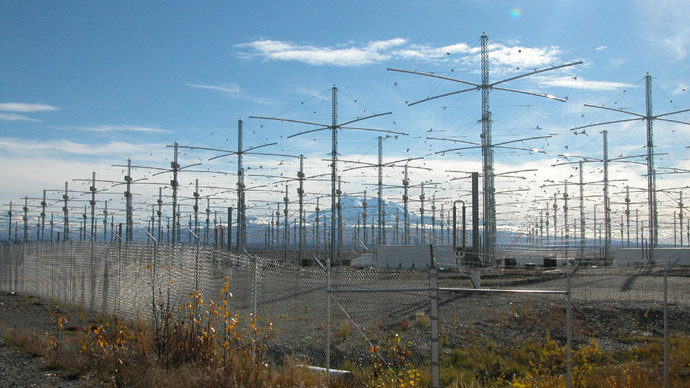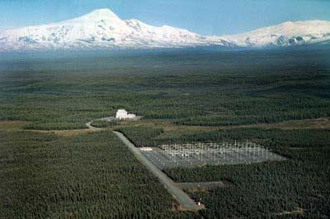Research center or weather weapon? US military is shutting down HAARP

Adepts of conspiracy theories might well take a deep breath: the HAARP program could be dismantled as soon as this summer, so from now on a tornado destroying your house will be a mere whirlwind, not a DARPA prank. Or will it?
The Air Force is said to be getting ready to wave their last
good-bye to the High Frequency Active Auroral Research Program
(HAARP), the Anchorage Daily News reports. Unlike last year’s rumors about the
project’s demise, this time it appears to be for real.
"We're moving on to other ways
(https://www.rt.com/news/dressed-lasers-weather-rain-548/) of managing
the ionosphere, which the HAARP was really designed to do,”
David Walker has recently told the House’s Appropriations
Subcommittee as leaked on YouTube. Walker is an Air Force
official tasked with overseeing much of the branch's science and
technology research efforts.
After 21 years of experiments, the controversial HAARP project is
no longer “an area that we have any need for in the
future,” he said.
For over two decades this enigmatic scientific installation,
constructed in a remote area of the state of Alaska, was a magnet
for conspiracy adepts.
HAARP has been incriminated in being the reason for probably all
kinds of natural disasters, from hurricanes and tornadoes to
floods, earthquakes and even global population mind control
experiments.
The suspicions ran wide and touched nerves with quite a few
notable figures around the globe.
In 2010, the then president of Iran, Mahmoud Ahmadinejad, said
the facility was responsible for devastating floods in Pakistan.
He gave this pronouncement from a rostrum of the UN General
Assembly.
The same year the now-deceased Venezuelan leader Huge Chavez
claimed that experiments at the HAARP facility triggered the
powerful Haiti earthquake, which happened when the Caribbean and
North American tectonic plates shifted alongside a previously
unmapped fault.
HAARPing on nature
Managing the ionosphere for military needs, such as communication, appeared a promising idea back in the early 1990s, when the US Air Force, Navy, the Defense Advanced Research Projects Agency (DARPA) and the University of Alaska teamed up to fund the $290 million High Frequency Active Auroral Research Program (HAARP).

The project’s staff always denied participation in any classified experiments.
It was at the HAARP facility where the first man-made northern lights were demonstrated.
Actually, the HAARP facility has not been active for the past year; last May it was shut down for a change in operations contractors. Reportedly, the facility performed its last experiment for DARPA in early 2014 and is now looking for financial support from the scientific community or other US agencies. Otherwise, the facility might be gone by summer.
"We would prefer to start this summer," Walker said. "We would like to get critical equipment out of the site before the winter. For the harsh winter in Alaska does lead to a very costly winterization to maintain the site and we'd like to avoid it if we can."
Although the HAARP installation is two decades old, it is still
operable and could be used for scientific research, but most
probably not at the expense of the US military struggling to
reduce spending.
The annual costs of running the facility have been around $5
million. This is a mere drop in the ocean compared to the
military’s total budget - over $600 billion for 2015.
If American or foreign scientific institutions and laboratories fail to find the means to finance the unique installation, this page of human research into nature’s secrets is set to be closed. And Walker says there are "interested" universities.













